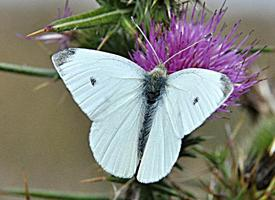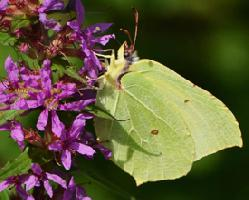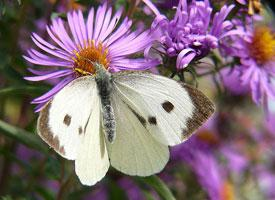
Súlyok és méretek
| Szárnyfesztávolság | 32-tól 47-ig mm |
|---|
Állatleírás
The Small White, scientifically known as Pieris rapae, is a species of butterfly that belongs to the family Pieridae, which is known for its predominantly white or yellow species. This butterfly is widely recognized for its modest size and coloration, characteristics that have earned it its common name. It is native to Europe and Asia but has spread to North America and Australia, where it is often considered an invasive species due to its adaptability to various environments and the potential damage it can cause to crops.The adult Small White has a wingspan ranging from approximately 32 to 47 millimeters. The upper side of the wings is predominantly white. The forewings feature black tips, which are more pronounced in males than in females. In addition, males have a single black spot on each forewing, while females may have two. The underside of the wings is pale yellow or greenish-white, providing excellent camouflage against predators when the butterfly is at rest among vegetation.
The larvae, or caterpillars, of the Small White are velvety green with a faint yellow stripe along the back and sides. They are voracious feeders and primarily consume plants from the Brassicaceae family, including cultivated species such as cabbage, broccoli, and kale, which is why they are often considered pests by gardeners and farmers.
The life cycle of the Small White involves several stages: egg, larva (caterpillar), pupa (chrysalis), and adult (butterfly). Females lay their eggs singly on the underside of host plant leaves. After hatching, the caterpillars feed on the leaves, growing rapidly until they are ready to pupate. The chrysalis is usually attached to a leaf or stem of the host plant or nearby vegetation. After about two weeks, the adult butterfly emerges, ready to mate and continue the cycle.
Small Whites are highly adaptable and can thrive in a wide range of habitats, including gardens, meadows, parks, and agricultural areas. They are often seen fluttering close to the ground, visiting a variety of flowers to feed on nectar. Despite their preference for sunny weather, they are capable of flying in overcast conditions, which helps them in their role as pollinators.
The spread of the Small White beyond its native range has been facilitated by global trade and the butterfly's ability to adapt to new environments. While it is admired for its beauty and role in pollination, its caterpillars' appetite for cruciferous vegetables has led to efforts to control its population in areas where it poses a threat to agriculture.
In conclusion, the Small White is a fascinating species that exemplifies the delicate balance between beauty and the potential for agricultural disruption. Its simple yet elegant appearance, combined with its complex life cycle and adaptability, makes it a subject of interest for both scientists and butterfly enthusiasts alike.
Hasonló állatok
Új állatfotók
Top 10 állat
- Dolphin gull (Leucophaeus scoresbii)
- Japanese macaque (Macaca fuscata)
- Stone loach (Barbatula barbatula)
- Russian tortoise (Testudo horsfieldii)
- Galápagos tortoise (Geochelone nigra complex)
- Greek tortoise (Testudo graeca)
- Diana monkey (Cercopithecus diana)
- Common flying dragon (Draco volans)
- Moustached guenon (Cercopithecus cephus)
- Galápagos penguin (Spheniscus mendiculus)


